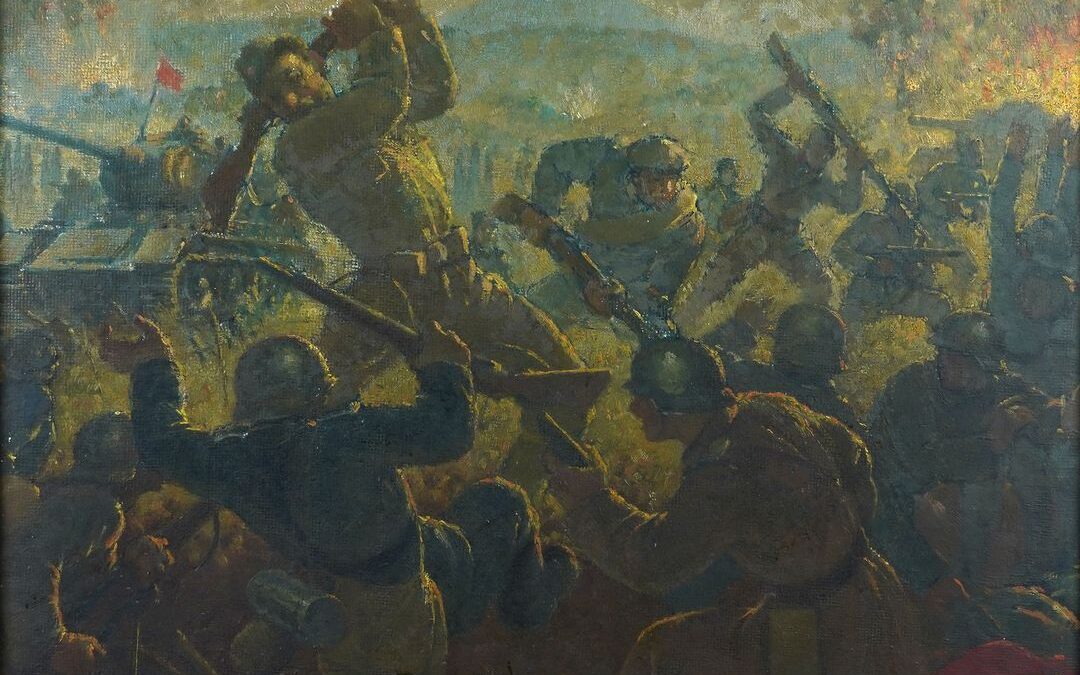Vasa Pomorišac was born on December 15th, 1893, in Modoš, a place known today as Jaša Tomić. As a 12-year-old, he made his first painting school in the studio of his fellow citizen, the painter Stevan Aleksić, who revealed to him the secret trades in the spirit of the Munich school of painting and led him into the world of religious painting. He settles in that world and creates his first painting and icons for churches.
The visit to the Fourth Yugoslav Exhibition represented a turning point in Pomorišac’s artistic life, when he admitted that he wanted to be formally educated as a painter. Enrolling at the Academy in Munich in 1913 in the class of Professor Hackel marked the beginning of a winding but fruitful educational path. Even then, he very critically notes that “there are impressionists, futurists and all kinds of role models, of course also Christians, but that’s why they are instructive, and I, who am reserved, just listen and ask”. His education was interrupted by the outbreak of the First World War, when he returned to Modoš where he reported to the authorities as a conscript, was sent to war, quickly surrendered to the Russian side, and in order to avoid fighting on the side of Austro-Hungary. In 1916, he was wounded and then he was transferred from the front to a Moscow hospital, where after his discharge he would have the opportunity to enjoy the cultural life of the Russian capital, visiting museums and galleries, getting an informal education, until the moment when he was transferred to Odessa, and finally to Thessaloniki front where he joins the Serbian army as a war painter.
The end of the war also marks the continuation of Pomorišac’s further education. First, he goes to Zagreb, where he enrolls in the School of Art and Crafts, where he will deepen the idea of art as a phenomenon inseparable from society and tradition. At the end of 1919, he came to Belgrade and enrolled in the School of Arts and Crafts, and for the first time he encountered the art of Serbian medieval monasteries, which aroused interest and admiration for fresco painting in Pomorišac, the reflections of which will be read in his later works. He came to London, the city where he wanted to continue his studies, in 1921, a year after living in Brussels, where he worked as a typewriter in order to secure money for his education. He enrolled first in the private painting school of St. Martin and then in 1922 in the Central School arts and crafts specializing in painting on glass, becoming a pioneer of stained glass in the Kingdom of Yugoslavia.
Returning to Belgrade, he continues to advocate for the cultivation of national style through modern artistic expression based on Serbian and Byzantine artistic traditions. That idea was incorporated into the “Zograf” group, which Pomorišac would found in 1927 together with Živorad Nastasijević and Ilija Kolarović. He spent the interwar period in Paris, and finally settled in Belgrade, where in 1942 he began his teaching career at the Academy of Fine Arts and then at the Academy of Applied Arts. In the later period of his life, after the Second World War, Pomorišac turned to “Lada” and realistic painting. What characterizes his entire painting oeuvre is “refined drawing and great knowledge that he displayed while working in all techniques.” Stylistic development includes realist beginnings, with later influence of secession and expressionism, reconsideration of constructivism, neoclassicism. As the Yugoslav critics viewed him as a traditionalist, an illustrative artist, the foreign critics were favourable to him considering that they recognized in him “indigenousness and exceptional knowledge of the craft of the very “queens” of the name” against the “unoriginality” of other Yugoslav artists. He died in Belgrade on September 9th, 1961.
Jelena Marković
art historian, volunteer
National Museum Kraljevo
